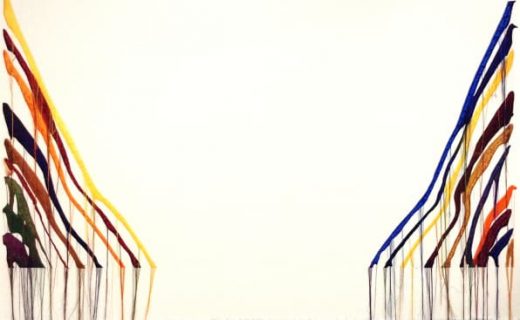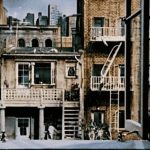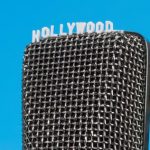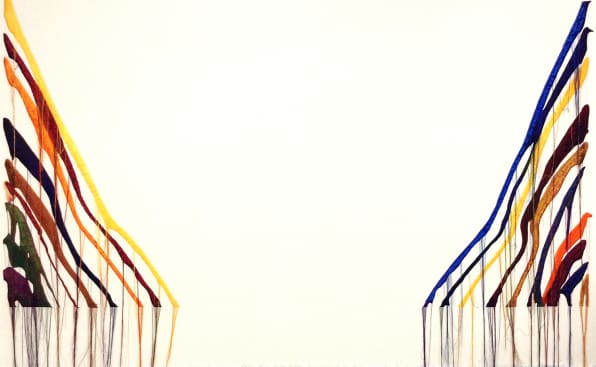The South Korean Artist Who Smuggles Internet Culture Across The DMZ
Since 2008, Korean artist Kyungah Ham has worked on a series of massive embroidery pieces with collaborators she’s never met. Ham, born in 1966, works with intermediaries to smuggle her designs from South Korea to the communist North, where artisans painstakingly bring her ideas to life, stitching words (in English and Korean), shapes, and colors by hand over hundreds or even thousands of hours. The designs don’t cross the demilitarized zone between the two Koreas directly; they’re typically smuggled back and forth through China, and the finished pieces return to Ham through a similar route. Her designs deliberately include elements she believes wouldn’t otherwise be visible in North Korea including internet slang, South Korean pop songs, newspaper headlines, and abstract designs inspired by Western artists like American painter Morris Louis.
“We’re living in a digital era, and we can access any piece of information with just a click of the mouse,” Ham says. “You can’t do that in North Korea. So I had the idea to convert collected internet news articles, images, and text into embroidery—an analog and labor-intensive method—which in some ways reflects current life in North Korea.”
Both Ham and the artisans she works with have had to take steps to evade censorship by the North Korean authorities. But in the rest of the world, the Embroidery Project (as it’s often called) has drawn attention, including earning Ham a nomination for the Korea Artist Prize, an exhibition earlier this year at the Taipei Biennial, and an appearance in November at a University of California, Davis, colloquium on North Korea.
Ham spoke to Fast Company via email about the significance of the series and how it’s evolved over time.
Can you tell us about your inspiration for the embroidery project and how it got started?
I found a propaganda flyer under the gate of my parents’ house, blown by the wind from somewhere. I believe that it came from North Korea, as it was very common to find these propaganda flyers . . . in my town and on the streets when I was young. At the time, South Korea was under military dictatorship that was strongly anti-Communist. As [children], when we brought these propaganda flyers to school, we would receive compliments and rewards. We were taught and believed that the communists had horns on their heads.
On the flyer I found in 2008, there was a picture of the previous leader of North Korea, Kim Jong-il, surrounded by flowers (the national flower, called Kimjoingilia, is named after the leader Kim Jong-il), and there was some propaganda written on it. For me, it represented an unknown world. Holding it in my hand, it felt like an unexpected, alien thing, almost like an alien object blown from beyond Earth. The entire experience is still very palpable in my imagination, and I wanted to remain in that moment, where I was struck by an uncanny object that had no reference.
I had to think about what to send and how to communicate with [North Koreans]. Initially, I thought about sending stories and sharing news from our world, the outer world, so I collected articles. I expected that even if any censorship occurred, [the embroiderers] would still have enough time to read the news articles, and they could experience the images and texts as they slowly made the works.

What’s been the significance of the images and text that you’ve chosen? There are several different series within this ongoing embroidery project.
These include the Morris Louis Series, SMS (Sending Message Service) Series, and Chandelier Series. The SMS (Sending Message Service) Series consists of text hidden in abstract imagery. One of the works from the SMS Series has the text “Banga Banga” and its [definition]. The phrase means hello in Korean and is new slang circulating throughout online chatting platforms. I wanted to say “hello” to the embroidery artisans . . . and also hoped that this new word would secretly spread among the young generation in North Korea.
The “unfurled series,” among the Morris Louis works, especially reminds me of the political landscape of North and South Korea. At a glance, the colorful forms look like identical twins that seem to meet at the center of the canvas, although they do not actually meet. Meanwhile, the blank between each side reminds me of the DMZ (Demilitarized Zone). It was fabricated not only to let them read the hidden stories/news in the same color pattern, but also to facilitate the experience of abstract art, which is prohibited by the ideology of North Korea.
In the Chandelier Series, I imagined a kind of invisible mapping. The works would hang in five different cities of the countries that participated in the Potsdam Declaration [when Korea’s division was ratified]. I wanted to signify that the North Korean female embroidery workers, who are the victims of world history made by superpowers, exist behind each stitch.
I got the idea from a documentary about the Arirang Festival, which celebrates the birthday of Kim Il-sung, the first leader of North Korea. Specifically, the documentary described the people who hold colorful cards in synchronized movements in order to form images. Among the nameless participants, one boy briefly revealed his face to see the instructor’s order and then immediately hid behind the color card. That was a striking moment. He became an errant pixel—in the otherwise seamless image of a gun. Like the boy, the invisible existence of North Korean female embroidery workers is memorialized in every stitch.
What does the typical communication process look like for commissioning these pieces from North Korean artisans? What’s been the reaction from the “middlemen” you work with?
Communication with the North Korean artisans is limited and very restricted. Sometimes I left Post-It Note requests on the design or gave some instructions to my intermediary. But most of the time, I had to embrace the limited conditions, censorship, and unexpected events, which . . . eventually became the context of the work.
My first [piece] containing many international and domestic news articles was confiscated by North Korean authorities when it was almost completed, and it was never returned to me. On the second attempt to complete this project, I received the original design printout, returned in several different pieces. My intermediary said the artisans hid some parts that they thought were risky while they were working on the embroidery project to avoid the confiscation issue again.
Large-scale works such as those from the Chandelier series are often made up of several separate pieces, and I connect them together when they are returned. On one occasion, when the completed pieces were returned and placed together, I figured out that the whole shape of the chandelier embroidery seemed to be a parallelogram instead of a square shape as I had planned. This happened because each North Korean artisan would set each assigned piece with different tension on their respective frames, resulting in a crooked final shape. So I requested [that the] intermediary have them made correctly. He responded, “Please understand that the crooked chandelier has gone through the storms of life.”
Still, I receive various feedback from the middlemen, such as requests for works smaller in scale or for a project that does not use any text, only imagery, to avoid any inspection problems or confiscation issues. They even requested that I not promote the work so as not to draw press attention, so it’s getting more difficult to foster these transactions.

How have the works have evolved over time?
This project is based on collaboration, communication, sharing, and translation. I challenge my practice to go beyond physical and spatial limitations. If the current situation between South and North Korea changes, the meaning of the work will be interpreted in many different ways. In other words, the value of the work lies in the process and evolves over time.
I want to say two [last] things. The embroidery [is] the visible part of the work. There are invisible conceptual parts of the work that are [ed] as materials in the caption [when the pieces are shown]. For example, the 1,600 hours of labor of two people, as well as censorship, anxiety, ideology, bribery, and the middleman.
Secondly, the works are not only about the partition of South and North Korea. They are about how history was made and how borders are created, and how these borders restrict people.
Fast Company , Read Full Story
(65)














